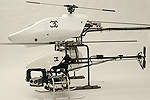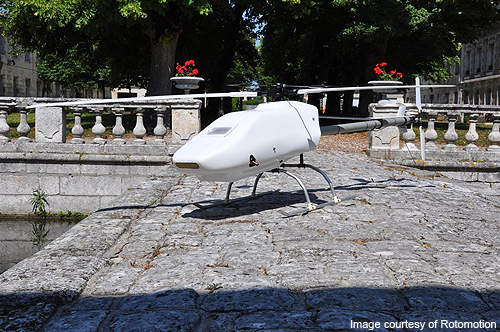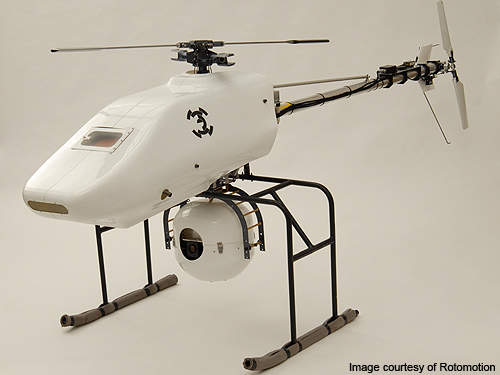The SR200 Rotary is a lightweight, vertical take-off and landing (VTOL) unmanned aerial vehicle (UAV) designed and manufactured by the US-based company Rotomotion. It is a large petrol powered helicopter, which captures real-time imagery and transmits to the ground control station via an automatic flight control system (AFCS) and a global positioning system (GPS).
The UAV can be used for both commercial and military applications which include agricultural spraying, image capturing, coast, surveillance, hostage search and radio signal relay.
SR200 helicopter UAV design
The SR200 has been designed to accommodate a spray system, which is directly interfaced with electronic control systems to activate spray releases based on the particular GPS coordinates and pre-programmed spray locations. Each spray system comprises a boom arm integrated with spray nozzles, gas tanks, a chemical tank, a spray tank, a liquid gear pump and electronic controls for spray tank.
The sprayer is designed to weigh less than 22.7kg. It can spray over 14ha of land on a single load at the rate of 0.3l/ha. The pumping speed of the sprayer should be 100ML/min provided the spray swath is 30m and its airspeed 2.2m/s. The helicopter uses one gallon of gas for every 45 minutes.
SR200 Rotary UAV features
The SR200 is equipped with a 2.4Ghz safety controller, a wide area augmentation system (WAAS), a ready-to-fly system, 802.11-based telemetry system, long endurance fuel tanks and on-board generators. It is also fitted with one to two day zoom cameras and infra-red cameras under the fuselage section.
The UAV features a glass fibre canopy, a video display unit (VDU), an inertial measurement unit (IMU), an inertial navigation system (INS) and a two-blade main rotor of 3m diameter. It is also equipped with a two-blade tail rotor of 0.7m diameter and 150W, 12V power bus with battery backup. The helicopter is equipped with two 15l gasoline tanks.
The aircraft can be operated in three modes – Velocity Command Mode (VC-Mode), Way Point Route Plan Mode (WAY-Mode) and Command Mode (CMD-Mode).
The position of the UAV can be controlled by the operator from a ground control station (GCS) through VC-Mode and flies a pre-programmed series of way points in WAY-Mode.
In CMD-Mode, the helicopter is controlled by transmitting guidance commands either manually by safety controller or through another computer system.
Navigation
The SR200 can be controlled either manually from the ground control station or through autonomous mode. It can take-off or land automatically even in adverse weather conditions using the AFCS and GPS.
Sensors
The UAV is equipped with electro optical (EO) and infra-red (IR) sensors. The EO sensor converts light rays into electronic signals to capture images, real-time data and videos.
Engine
The SR200 is powered by a single two-stroke 121cc gasoline engine. Each engine can produce 8.7hp (6.49kW).
Ground control station
The ground control station (GCS) is a compact and lightweight system, which displays real-time videos or images captured by the vehicle’s payload cameras. Processing, retrieving and storage of the real-time imagery captured by the UAV are carried out at the GCS. Rotomotion is the prime contractor involved in manufacturing the GCS.
The AFCS integrated in the GCS controls the helicopter. It comprises five major components which include a 3-axis, 60 of freedom IMU, a 3-axis magnetometer, a GPS, a radio receiver, and a Linux-based flight computer. The C++ programming system allows the aircraft to transmit or receive commands from the aircraft to the GCS or vice versa.
The commands transmitted from GCS are sent to the UAV based on their unique IP address.
Performance
The SR200 can climb at a rate of 400fpm. Its maximum speed is 80km/h. The UAV can loiter in air for four hours. The aircraft weighs around 25kg and its maximum payload weight is 22.7kg.







